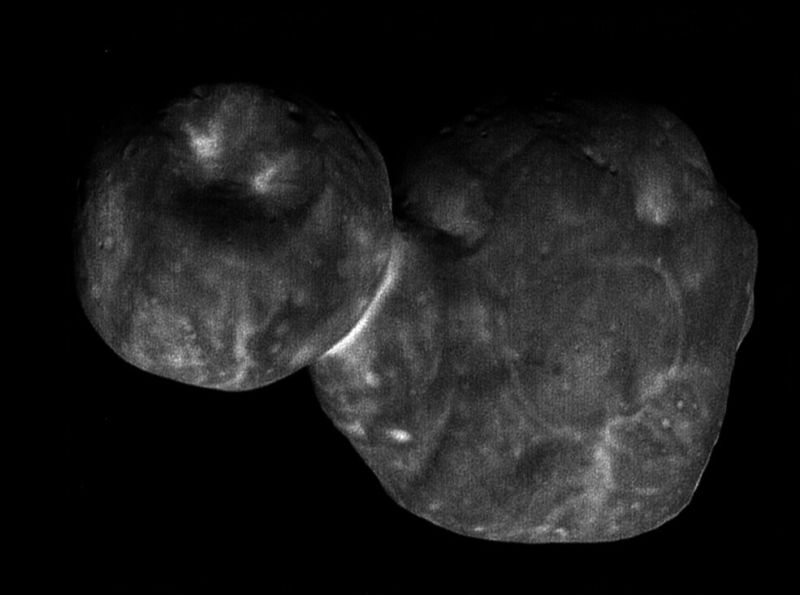The clearest images of Ultima Thule reveal a strange-looking object
Ars Technica » Scientific Method 2019-02-22

Enlarge / The most detailed images of Ultima Thule; obtained just minutes before the spacecraft's closest approach at 12:33 a.m. EST on Jan. 1. (credit: NASA/Johns Hopkins Applied Physics Laboratory/SWRI)
Twenty six minutes after the clock struck midnight on New Year's Eve in Times Square, the long-range camera aboard the New Horizons spacecraft was hard at work. The probe was just six minutes from its closest approach to Ultima Thule, an object formally named 2014 MU69, which resides in the Kuiper Belt around the outer Solar System.
One, two, three—the images ticked through, each with an exposure time of just 0.025 seconds. Four, five, six—and now the spacecraft was less than 7,000km away from its target. Seven, eight, nine—these pictures had to be perfect, because New Horizons was passing Ultima Thule at a speed of more than 50,000km/hour.
Only recently were investigators able to download all of these images and cobble together a composite image of the contact binary. With a resolution of 33 meters per pixel, this is probably as good of a view as we're going to get of Ultima Thule. And it still looks something like a snowman, peanut, pancake, or combination thereof.